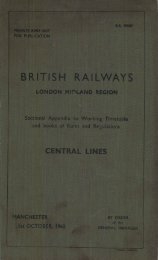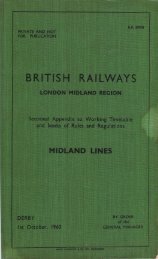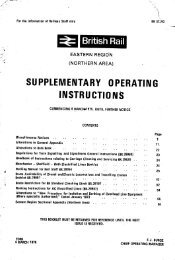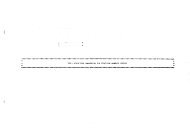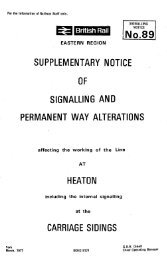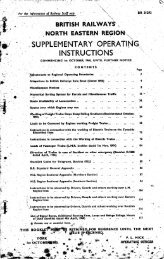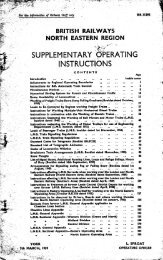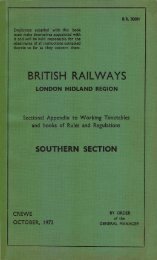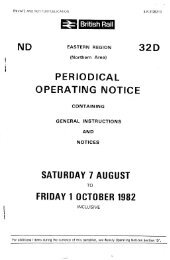general instructions. - Limit Of Shunt
general instructions. - Limit Of Shunt
general instructions. - Limit Of Shunt
Create successful ePaper yourself
Turn your PDF publications into a flip-book with our unique Google optimized e-Paper software.
100 G e r i a r a i nstructions.—Continued.<br />
Engines ni!Iran round train on Running Una where t o<br />
Signal oxes are involved Train and Block ell Signals.<br />
General Rule 128 and B.T.R.<br />
cases where there is an Advance signal at the box at which the<br />
engine leaves its train and the train is left standing within the Advance<br />
signal, the Signalman should cancel the bell signal for the train, if it has<br />
been sent to the Advance box and offer a light engine. The light engine<br />
should carry a tail lamp when running to the Advance Box.<br />
2.—In cases where there is no Advance signal at the box at which the<br />
engine leaves its train, or if it is necessary for the front of the train to be<br />
left standing beyond the Advance signal, the train should be signalled to<br />
the Advance box. The light engine should run to the Advance box<br />
without a tail lamp. The Driver should explain the circumstances to the<br />
Signalman in advance, who must not clear back to the box in the rear.<br />
When the engine has returned to the rear box and the line has been<br />
cleared, the Signalman should cancel the train to the Advance Box in<br />
accordance with the Regulations. ( O . 6722).<br />
TRAIN FOLLOW: G SEGINIAL.<br />
Gearal Rule 130.<br />
A supply of tail lamps is kept at each station where they are likely to<br />
be required at any time for the purpose of carrying out this rule.-<br />
Instructions to Staff in connection with the working el Foreign<br />
Companies Slip Carriages.<br />
General Rule 131 and B.T.R. 19 (g) and (h).<br />
1.—The slip portion must be composed of not more than three vehicles,<br />
all of which must be fitted with the Westinghouse or Vacuum brake. The<br />
first vehicle need only be a slip vehicle.<br />
2.--Slip carriages must be coupled to the train by the ordinary screw<br />
coupling and side chains until the train arrives at the last station at which<br />
it stops prior to passing the station where the slip portion has to be detached,<br />
from which point the slip coupling alone must be used.<br />
3.—Unless <strong>instructions</strong> to the contrary are issued by the General Superintendent<br />
when a train which conveys slip carriages has to be run in two<br />
portions, the first portion must not carry the usual slip carriage signals, but<br />
must carry an additional tail lamp, or a red board, or a red flag by day, and<br />
an additional red tail light by night, to indicate that the train is running in<br />
two portions. The second train must convey the slip portion, and carry<br />
the prescribed slip carriage signals.




